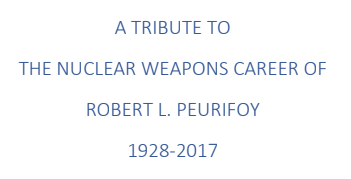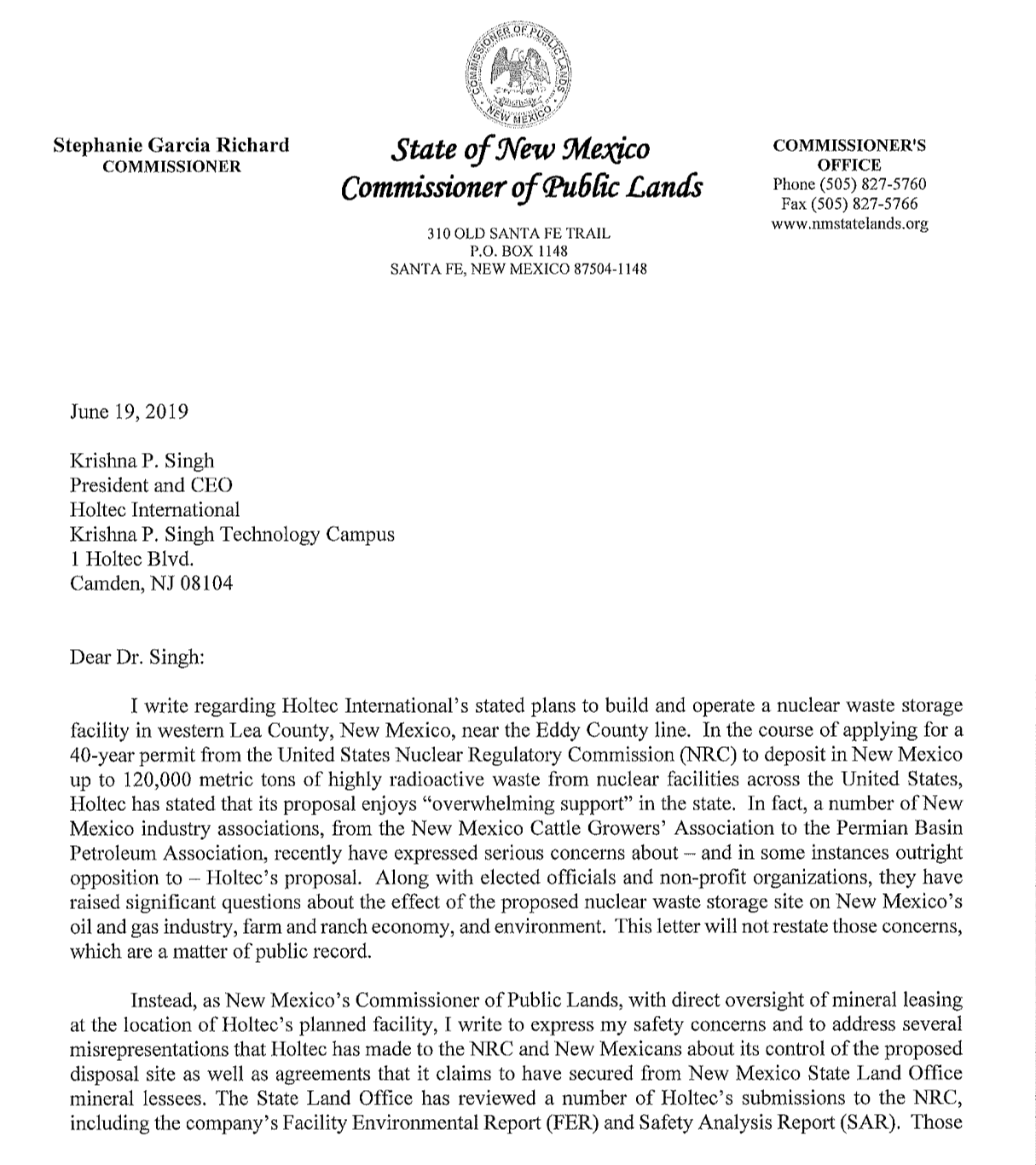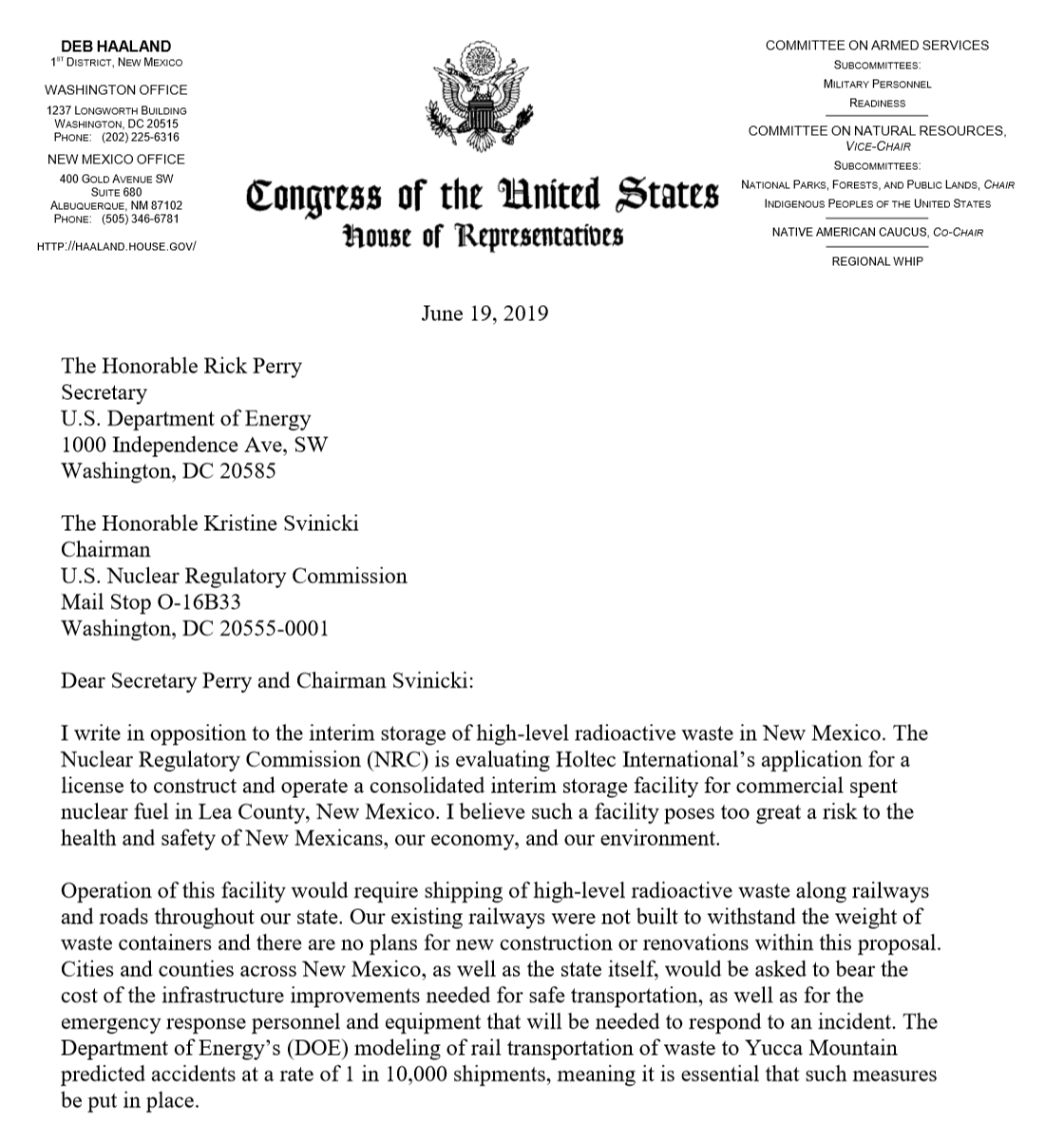2023 News Articles – All Posts
Nothing Found
It seems we can’t find what you’re looking for. Perhaps searching can help.
2022 Select Highlighted Press Items
Nuclear Modernization is the ’Absolute Minimum,’ STRATCOM Commander Says | March 8, 2022
US tested hypersonic missile in mid-March but kept it quiet to avoid escalating tensions with Russia | April 4, 2022
Putin’s Nuclear Threats Are a Wake-Up Call for the World | March 15, 2022
Intelligence report determines that Russia's WMD threats will grow as losses mount in Ukraine | March 19, 2022
China and the United States: It’s a Cold War, but don’t panic | March 10, 2022
Russian military doctrine calls a limited nuclear strike “de-escalation.” Here’s why. | March 8, 2022
North Korea says it will strike with nuclear weapons if South attacks | April 4, 2022
Flying Under The Radar: A Missile Accident in South Asia | April 4, 2022
2022 News Articles
Listen and subscribe to Press the Button, a weekly podcast from Ploughshares Fund dedicated to nuclear policy and national security.
July 15 — In this episode, Michelle Dover, Abigail Stowe-Thurston and Tom Collina deliver a wonderful, incisive news segment summarizing the major gains and debates in the NDAA (and how the Kardashians are getting involved in nuclear issues!).
Suzanne DiMaggio is featured delving deep into the dynamics of the crises with Iran and North Korea. Suzanne also presents her powerful rationale for the new Quincy Institute, where she is chair of the board.
“Looking at the catastrophic failures in foreign policy over the past decades, it is clearly time for something new,” Suzanne says, “The times demand it…We have to change the narrative in this town.”
Listen, Subscribe and Share on iTunes · Spotify · SoundCloud · Google Play
Also available on ploughshares.org/pressthebutton
Zakaria: The cancerous consensus in today’s politicized Washington
The United States’ defense budget is out of control, lacking strategic coherence, utterly mismanaged, ruinously wasteful and yet eternally expanding… “We never expected to pass [a financial audit],” admitted then-Deputy Defense Secretary Patrick Shanahan.
BY FAREED ZAKARAIA | trib.com
You often hear that in these polarized times, Republicans and Democrats are deadlocked on almost everything. But the real scandal is what both sides agree on. The best example of this might be the defense budget. Last week, the Democratic House, which Republicans say is filled with radicals, voted to appropriate $733 billion for 2020 defense spending. The Republicans are outraged because they — along with President Trump — want that number to be $750 billion. In other words, on the largest item of discretionary spending in the federal budget, accounting for more than half of the total, Democrats and Republicans are divided by 2.3 percent. That is the cancerous consensus in Washington today.
America’s defense budget is out of control, lacking strategic coherence, utterly mismanaged, ruinously wasteful and yet eternally expanding.
Lindsey Graham joins legal fight to restart SC nuclear fuel plant (MOX)
U.S. Sen. Lindsey Graham is urging the nation’s highest court to take up what appears to be South Carolina’s final push to resuscitate a shuttered nuclear facility at the Savannah River Site and bolster federal rules tied to plutonium processing and long-term storage.
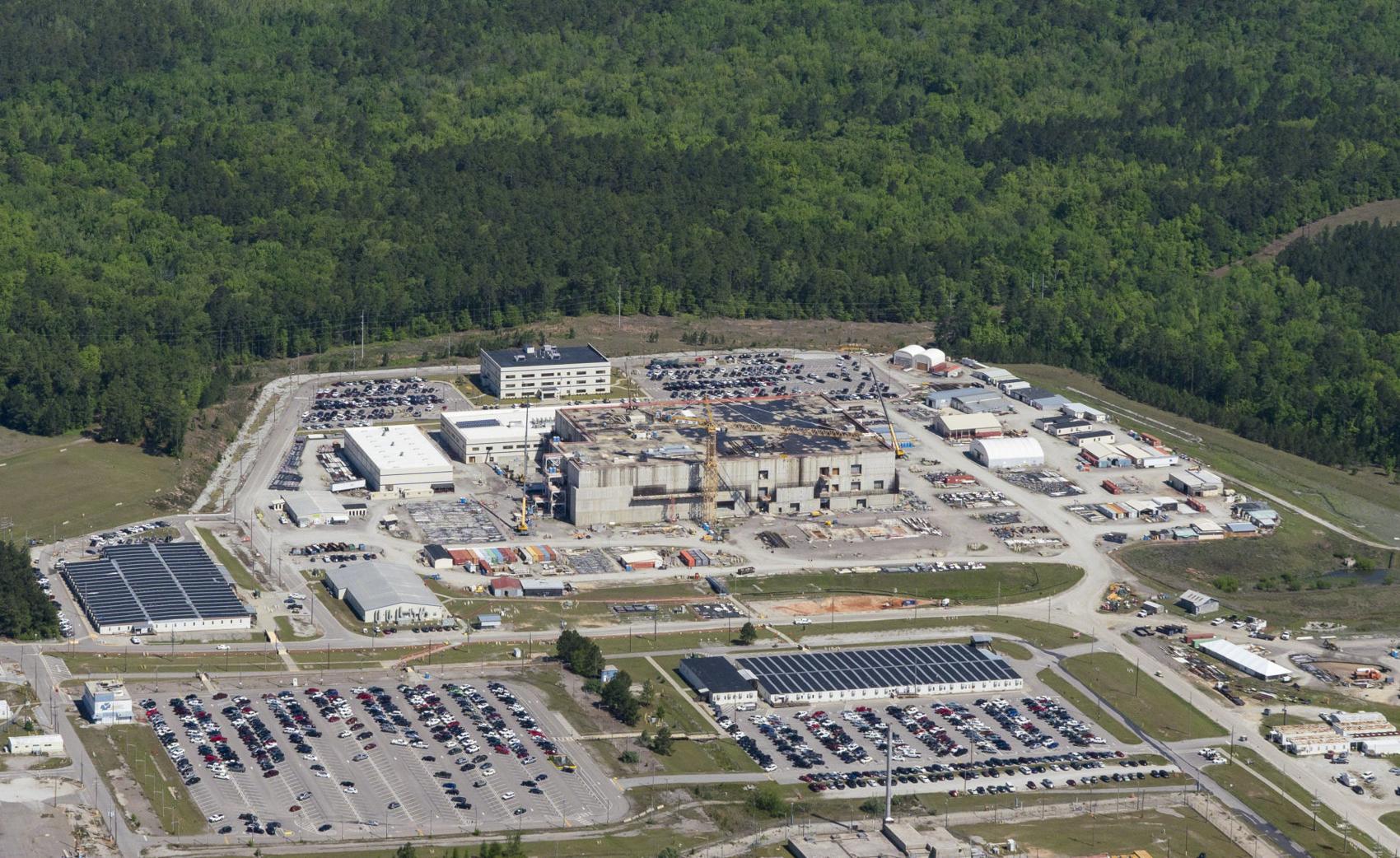
BY COLIN DEMAREST | postandcourier.com
Graham, a South Carolina Republican who chairs the Senate Judiciary Committee, argues that the federal government walked away from its obligation to address the plutonium stored in the Palmetto State. He addressed these concerns in a brief filed July 11 with the U.S. Supreme Court.
“The federal government previously made legally binding commitments to the state of South Carolina in recognition of its sovereign status and its proprietary interests,” Graham argued in the brief. “It has now breached those commitments, causing injury to the state that a court may redress.”
The brief describes Graham as “personally familiar” with the matters at hand and profoundly interested in the federal government’s promises to the state, which he was involved in negotiating.
Class Action Suit Draws Big Crowd – Portsmouth Gaseous Diffusion Plant
“DOE is simply not to be trusted. Period.”
— Carlos Williams speaking about local cancer concerns.
He has lived for thirty years five miles from the Portsmouth, Ohio uranium enrichment plant.
BY TOM CORRIGAN | PORTSMOUTH DAILY TIMES © 2019 Portsmouth Daily Times, all rights reserved.
Their stories were extremely varied. But many had one unfortunate commonality: cancer.
A small portion of the crowd which lined up and waited hours Tuesday in the OSU Endeavor Center in Piketon.Larry and Janie Williams describe themselves as being fence line neighbors of the Portsmouth Gaseous Diffusion Plant since 1972. When she began to fall ill somewhat over four years ago, Larry said his wife’s doctor asked how she had come to be exposed to radiation. Janie never worked at the Portsmouth plant but spoke of daily hearing the ongoing construction of the decommissioned plant’s controversial on-site waste disposal facility. Janie said she developed a type of cancer that attacked her blood. Treatment included extremely expensive stem cell transplants. The transplants did buy her some time, though she added doctors gave her three to five years of life.
“I’m in year four,” said Janie, who clearly is accepting of her situation and spoke of her story unabashedly. She is 63.
Why SC is likely stuck with a stockpile of the nation’s most dangerous nuclear materials
POST & COURIER SPECIAL REPORT: LETHAL LEGACY
BY THAD MOORE & COLIN DEMAREST | postandcourier.com
South Carolina could be stuck with a massive stockpile of the nation’s most dangerous nuclear material for decades, despite a federal mandate and years of promises that the state wouldn’t become America’s plutonium dumping ground.
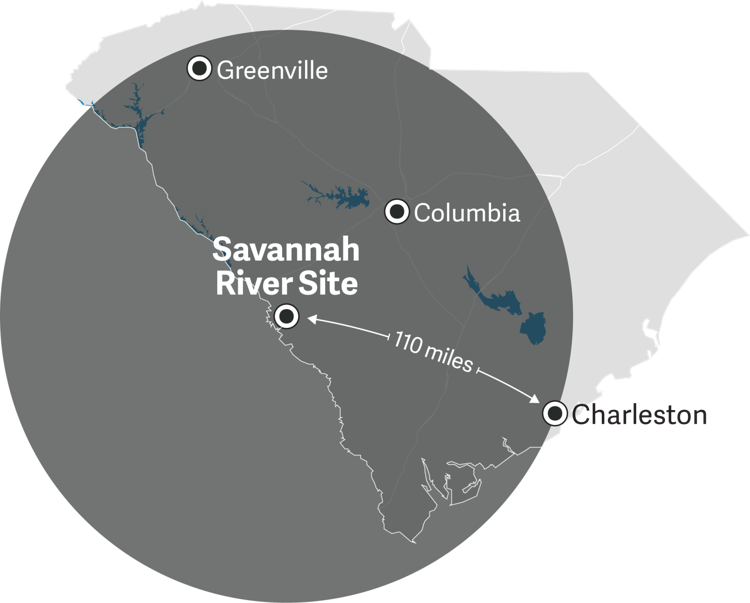 A restricted internal report obtained by the Aiken Standard and The Post and Courier suggests that the state is likely to become a long-term repository for enough plutonium to build the bomb dropped on Nagasaki nearly 2,000 times over.
A restricted internal report obtained by the Aiken Standard and The Post and Courier suggests that the state is likely to become a long-term repository for enough plutonium to build the bomb dropped on Nagasaki nearly 2,000 times over.
South Carolina faces this prospect despite a federal law that gives the U.S. Department of Energy just 2½ more years to remove its plutonium from the Savannah River Site, a huge swath of federal land along the Georgia border.
Hundreds gather in Piketon for town hall on alleged radioactive contamination
“[I] wanted to see what information is available,” Brandon Moore said. “What are we doing to help all these folks that are impacted or that may be impacted in the future?”
BY BRYANT SOMERVILLE. | 10tv.com
PIKETON, Ohio – People stood in line for hours, Tuesday, wanting to make sure they and their families were safe.
“I just want to make sure what’s going on if there was any contamination there or where we’re at,” Steve Copper said. “I want to make sure we got everything taken care of.”
“These materials are ounce-for-ounce the most dangerous materials known to man,” Stuart Smith said.
Smith is with Cooper Law Firm out of New Orleans. It was his firm that filed the lawsuit in May alleging Ohio residents near a former uranium enrichment plant in Piketon were exposed to radioactive contaminants that spread to other properties but were never informed.
Continue reading
Congress Introduces Legislation to Expand Compensation for Radiation Exposure
Luján, Members of Congress Introduce Legislation to Expand Compensation for Individuals Impacted by Radiation Exposure
Washington, D.C. – Today, Congressman Ben Ray Luján (D-N.M.), the U.S. House Assistant Speaker, introduced legislation to expand compensation for individuals exposed to radiation while working in and living near uranium mines or downwind from nuclear weapon test sites.
Tens of thousands of individuals, including miners, transporters, and other employees who worked directly in uranium mines, along with communities located near test sites for nuclear weapons, were exposed during the mid-1900s to dangerous radiation that has left communities struggling from cancer, birth defects, and other illnesses.

Trinity: “The most significant hazard of the entire Manhattan Project”
“New Mexico residents were neither warned before the 1945 Trinity blast, informed of health hazards afterward, nor evacuated before, during, or after the test. Exposure rates in public areas from the world’s first nuclear explosion were measured at levels 10,000- times higher than currently allowed.”
Final Report of the Los Alamos Historical Document and Retrieval and Assessment Project, Prepared for the Centers for Disease Control and Prevention, November 2010, pp. ES-34-35. VIEW HERE
Victims of the Trinity Test remain uncompensated, yet the Los Alamos Lab continues to expand plutonium pit production.
BY KATHLEEN M. TUCKER & ROBERT ALVAREZ | thebulletin.org
For the past several years, the controversy over radioactive fallout from the world’s first atomic bomb explosion in Alamogordo, New Mexico on July 16, 1945—code-named Trinity—has intensified. Evidence collected by the New Mexico health department but ignored for some 70 years shows an unusually high rate of infant mortality in New Mexico counties downwind from the explosion and raises a serious question whether or not the first victims of the first atomic explosion might have been American children. Even though the first scientifically credible warnings about the hazards of radioactive fallout from a nuclear explosion had been made by 1940, historical records indicate a fallout team was not established until less than a month before the Trinity test, a hasty effort motivated primarily by concern over legal liability.
Peace Activists Cut into Nuclear Weapons Base, Foiling Increased Security
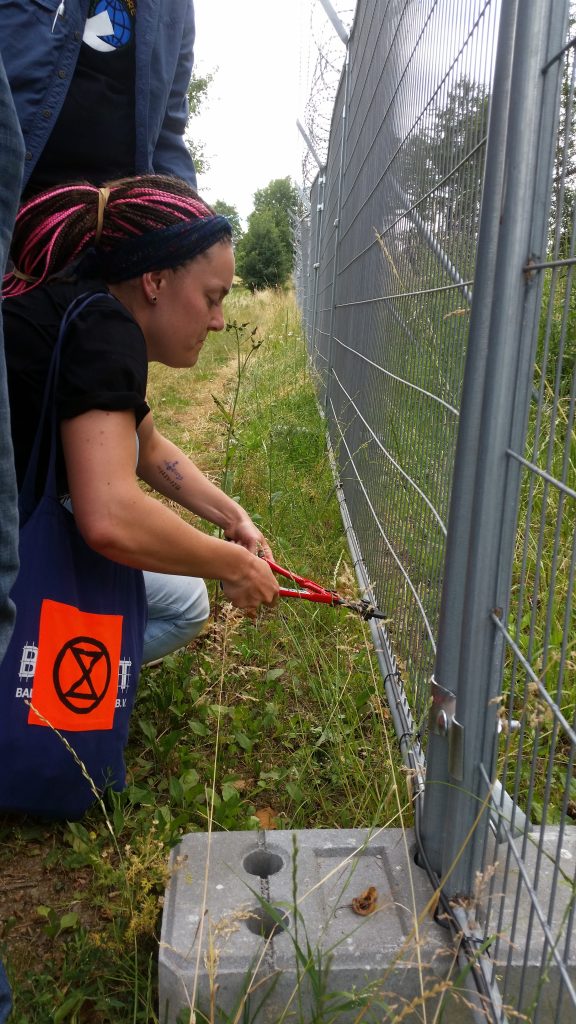
The Hoax That Nuclear Power is Green
This “Enviro Close-Up with Karl Grossman” demolishes the hoax that nuclear power is green. Continue reading
Wyoming lawmakers quietly explore storing spent nuclear fuel
Management Council votes by email to study housing spent nuclear fuel at Gas Hills, Shirley Basin to bring what a state senator says could be $1 billion a year.
Massive containers hold spent nuclear fuel at a dry storage facility. This photo shows, at right, a dry cask recently loaded with spent fuel being lifted from a horizontal transporter to be placed verticlaly on a specially designed storage pad. (Flickr Creative Commons/Sandia National Laboratories)ANGUS M. THEURMER JR. | wyofile.com
A legislative committee has appointed six of its members to investigate the idea with the U.S. Department of Energy, Sen. Jim Anderson (R-Casper) told WyoFile on Friday. Anderson is co-chairman of the Joint Minerals Business and Economic Development Committee which received approval and funding from the Legislative Management Council in an unannounced vote to study the issue before the next legislative session begins in early 2020.
Wyoming’s dependence on an ailing coal industry spurred talk about pursuing the temporary storage idea, Anderson said. Fuel rods would be housed in casks with two-foot-thick walls, he said.
US suspends low-level radioactive waste shipments to Nevada
BY SCOTT SONNER | time.com
(RENO, Nev.) — A Nevada congressman called for U.S. Energy Secretary Rick Perry’s resignation Wednesday after the department acknowledged multiple shipments of low-level radioactive waste to a site north of Las Vegas may have been mislabeled and out of compliance with safety regulations for years.
The department had announced earlier that shipments of the waste from Tennessee to Nevada have been suspended while it investigates whether the materials were “potentially mischaracterized” as the wrong category of low-level waste. Low-level waste can include equipment or worker’s clothing contaminated by exposure to radiation, while mixed low-level waste can include toxic metals.
America’s Indefensible Defense Budget
BY JESSICA T. MATTHEWS | nybooks.com
The sheer size of the military establishment and the habit of equating spending on it with patriotism make both sound management and serious oversight of defense expenditures rare.
As a democracy, we are on an unusual and risky path.
For several decades, we have maintained an extraordinarily high level of defense spending with the support of both political parties and virtually all of the public. The annual debate about the next year’s military spending, underway now on Capitol Hill, no longer probes where real cuts might be made (as opposed to cuts in previously planned growth) but only asks how big the increase should be.
NMED won’t move LANL Oversight Bureau office from Los Alamos
“New Mexico Environment Department (NMED) Secretary James Kenney and other members of the department’s staff held a public meeting July 8 to address fears that NMED would move the Los Alamos National Lab (LANL) Oversight Bureau field office out of Los Alamos.
In June, the department announced a proposal to move the field office to a Santa Fe location. The news was met with immediate backlash from LANL watchdog groups such as Concerned Citizens for Nuclear Safety and Nuclear Watch New Mexico.”
By Kendra Chamberlain | nmpoliticalreport.com
The department held the meeting, the first of a series of public outreach events the department plans to hold this year throughout the state, in part to assuage public concerns around the future of the Oversight Bureau’s field office in Los Alamos.
In June, the department announced a proposal to move the field office to a Santa Fe location. The news was met with immediate backlash from LANL watchdog groups such as Concerned Citizens for Nuclear Safety and Nuclear Watch New Mexico.
Kenney, along with Resource Protection Division director Stephanie Stringer and Administrative Services Division director Michelle Desmond, explained some of the factors behind the contemplated move in a short presentation to audience members.
“[There] was never the intent to decrease oversight, or lessen any compliance or enforcement [over LANL],” Stringer told audience members.
“A lot of people [thought] when they heard we were moving off the hill, that it meant less oversight. There is no doubt in my mind that Secretary Kenney has made it my job to absolutely make sure compliance and enforcement and oversight of these facilities are top priority,” she said.
Iran’s Uranium Enrichment Breaks Nuclear Deal Limit. Here’s What That Means
Vahid Salemi/AP
BY GEOFF BRUMFIEL | npr.org July 7, 2019
Iran has crossed another line set in the 2015 nuclear deal between it and major world powers.
According to state media, Iran has begun enriching uranium above levels enshrined in the agreement. The move sends a signal that Iran is losing patience with a deal that has not provided the economic relief promised, more than a year after the United States withdrew from the agreement.
By Monday, Iran had reached levels of around 4.5% enrichment, Behrouz Kamalvandi, the spokesman for the Atomic Energy Organization of Iran, told the semiofficial Fars news agency. He warned that Iran could go as high as 20% in the future, though that level is “not needed now.”
Inspectors from the International Atomic Energy Agency confirmed that Iran has crossed the line.
What public engagement?
This article was originally published July 6, 2019 in the Santa Fe New Mexican
Article Written by NukeWatch NM Volunteer: ALICIA SANDERS-ZAKRE
The Department of Energy’s new attempt at “enhanced public engagement” on legacy nuclear waste cleanup at Los Alamos National Laboratory failed both its stated objectives to consider public input and provide public education. To turn things around, officials should actually listen to public attendees and provide complete information at future meetings.
In the two-hour June 26 forum in Los Alamos, officials from the department’s Environmental Management Los Alamos Field Office, alongside N3B, the contractor tasked with implementing the cleanup, repeatedly proclaimed their interest in hearing from the public and pledged total transparency, but they didn’t give anyone in the packed room a chance to speak.
Renewables Catching Nuclear Power In Global Energy Race
Coal is still the dominant source of electricity around the world, although natural gas has taken over the top spot in the U.S. But, renewables have grown rapidly over the past decade, and are on the cusp of overtaking nuclear globally.
From 2007 to 2017, the Renewables category grew at an average annual rate of 16.4%. But within that category, power from geothermal and biomass grew at an annual average of 7.1%. Wind and solar power, by contrast, grew at an annual average of 20.8% and 50.2%, respectively, over the past decade.
In 2018, nuclear power was responsible for 2,701 Terawatt-hours (TWh) of electricity generation, compared to 4,193 TWh for hydropower and 2,480 for renewables.
RCLC Hears Talk On Nuclear Fuel Storage Facility
The Regional Coalition of LANL Communities (RCLC) Board met Thursday in Española.
Scott Kovac of Nuclear Watch New Mexico expressing his concerns during the public comment portion of Thursday’s meeting. Photo by Carol A. Clark/ladailypost.comBY BONNIE J. GORDON | ladailypost.com
The meeting included a presentation by Holtec International Program Director Ed Mayer describing the safety features of a proposed storage site in southern New Mexico should the Nuclear Regulatory Commission issue the New Jersey-based company a 40-year license. If that happens, Holtec would build a multibillion-dollar site to temporarily store spent nuclear fuel from commercial reactors around the United States.
“Our job is to prove the facility is safe and secure,” Mayer said.
New Mexico Appeals Court Expects Waste Volume Status Report Soon
BY EXCHANGE MONITOR | exchangemonitor.com
The New Mexico Court of Appeals expects a status report by July 31 on mediation between the parties in litigation over changes to the way the Department of Energy calculates the underground volume of transuranic material at its Waste Isolation Pilot Plant (WIPP) near Carlsbad.
The mediation began last month between representatives of DOE, the New Mexico Environment Department, and the advocacy groups Nuclear Watch New Mexico and the Southwest Research and Information Center (SRIC). The state appeals court routinely requires parties to go to mediation in cases involving state agencies before a lawsuit proceeds to trial, says Don Hancock, director of the SRIC nuclear waste safety program. He declined to elaborate on the status of mediation.
US arms control office critically understaffed under Trump, experts say
State department office whittled down in staff numbers from 14 at start of administration to four as Trump shifts approach
The US national security adviser, John Bolton, is widely seen as a lifelong opponent of arms control agreements. Photograph: Oded Balilty/APBY JULIAN BORGER | theguardian.com
A state department office tasked with negotiating and implementing nuclear disarmament treaties has lost more than 70% of its staff over the past two years, as the Trump administration moves towards a world without arms control for the first time in nearly half a century.
The Office of Strategic Stability and Deterrence Affairs, normally a repository of expertise and institutional knowledge that does the heavy lifting of arms control, has been whittled down from 14 staffers at the start of the Trump administration to four, according to the former staffers.
Nuke-Backing NDAA Passes Senate in Landslide
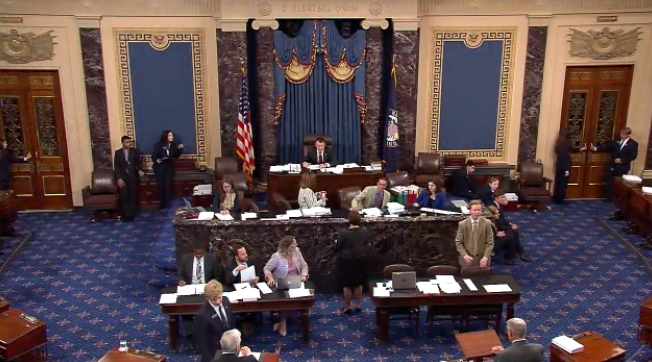
Graham and Heinrich double down on pit production and Safety Board threatened by Senate bill
BY DAN LEONE | exchangemonitor.com
The U.S. Senate on Thursday overwhelmingly passed a 2020 National Defense Authorization Act (NDAA) that would authorize all the White House’s requested funding for nuclear modernization programs at the Department of Energy and the Pentagon.
The Senate bill would provide a year of bipartisan support for the Donald Trump administration’s nuclear arsenal modernization plans, which are essentially a lightly modified continuation of the 30-year refurbishment the Barack Obama administration started in 2016.
In stark contrast, the House’s version of the NDAA — up for floor debate as soon as the week of July 8 — eyes major changes for the decades-long arsenal refresh by slowing work on nuclear-tipped intercontinental ballistic missile (ICBM) programs at DOE and the Defense Department.
Tribute to Robert L. Peurifoy
A tribute to the nuclear weapons career of the late Robert L. Peurifoy (1928-2017) was recently posted HERE
Bob Peurifoy worked at the Sandia Labs for 39 years, serving as director of nuclear weapon development and retiring as a vice president. He was the driving force behind many safety improvements to U.S. nuclear weapons and a strong believer in conservative maintenance of the stockpile. Bob was also a strong critic of aggressive Life Extension Programs that further diverged the stockpile from its tested pedigree and wasted taxpayers’ money. As Bob’s friend and colleague Gordon Moe puts it, “Bob’s family and I hope that Bob’s wisdom and reason as reflected in the Tribute will continue to benefit humanity for many more years through its use as a reference by researchers in the field of nuclear weaponry.”
VIEW FULL TRIBUTE – PDF
A synopsis of the full tribute was written by Gordon Moe, Puerifoy’s fellow Sandia scientist, colleague and friend –
VIEW TRIBUTE SYNOPSIS
Kick-Off For Public Participation In LANL Legacy Waste Cleanup Draws Large Crowd At Fuller Lodge
BY MAIRE O’NEILL | losalamosreporter.com
The message was clear at Wednesday evening’s Environmental Management Cleanup Forum at Fuller Lodge hosted by the Department of Energy’s Environmental Management Los Alamos (EM-LA) Field Office and legacy cleanup contractor N3B. That message, according to EM-LA manager Doug Hintze was that the Department of Energy is changing its way of doing business as far as community participation.
Jay Coghlan, NukeWatch NM Director, said about the meeting: “They had too much of an opportunity to control the questions through written submissions and pick and choose what they want. Future meetings should be quite different with open and free discussion,” he said. “I’m fully-prepared to push for the transparency that they claim that they’re operating with.”
“We’re not asking for input – you’ve been giving us input. We’re asking for participation to make sure you understand the risks that we have, the challenges including funding, the cleanup standards and so forth. We’re asking for your participation,” he told a packed room.
N3B’s Regulatory and Stakeholder Interface Manager Frazer Lockhart addresses a large crowd Wednesday evening at Fuller Lodge during a forum on legacy waste at Los Alamos National Laboratory. Photo by Maire O’Neill/losalamosreporter.com Department of Energy Environmental Management Los Alamos Field Office Manager Doug Hintze, left, speaks with New Mexico Environment Department Secretary James Kinney Wednesday evening at Fuller Lodge. Photo by Maire O’Neill/losalamosreporter.comCoghlan told the Los Alamos Reporter that EM-LA “have repeated rhetoric for full and complete transparency.
“They’re making the claim that more than half the cleanup is completed. This of course is representative of hidden decisions already made to leave behind the vast majority of waste. So this meeting was just a complete sham and it was carefully controlled really, to make it all look warm and fuzzy when it’s not,” he said.
Group seeking stormwater regulations in Los Alamos County plans to sue EPA
“An environmental group said it intends to sue the federal Environmental Protection Agency for failing to determine whether stormwater from Los Alamos County should be regulated by a federal pollution permit under the Clean Water Act.”
BY REBECCA MOSS | santafenewmexican.com
Pollutants — including mercury, copper, cyanide, gross alpha radiation and PCB chemicals — have been detected well above human health and state water quality standards in stormwater runoff samples, attorneys for Taos-based Amigos Bravos said in a letter Wednesday to EPA Administrator Andrew Wheeler and David Gray, acting regional administrator.
According to the letter, levels of PCBs, linked to liver and thyroid cancer and reproductive damage, have been detected at levels thousands of times greater than state standards. Runoff from rain or melting snowpack carries metals and chemicals through the finger-like canyons that surround Los Alamos National Laboratory and urban areas of the county.
Amigos Bravos, a water conservation group, petitioned the EPA nearly five years ago to determine whether the water quality violations in Los Alamos County required a federal permit. Such permits are used to enforce water quality standards and keep pollution below certain levels.
Dangerous chromium plume closer to Los Alamos County well
Chemical contamination more than four times the state limit was detected late last month at the edge of a plume in the aquifer roughly 1,000 feet below Los Alamos National Laboratory.
BY REBECCA MOSS | santafenewmexican.com June 21, 2019
It is the closest high-level measurement of hexavalent chromium detected near the well used to pump drinking water to Los Alamos County, roughly a third of a mile away.
“Our drinking water supply is safe, and we are vigilantly working to keep it that way,” said Tim Glasco, utilities manager for Los Alamos County.
Hexavelent chromium, an industrial chemical tied to lung and other cancers, was found pooled below Sandia and Mortandad canyons in 2005, and environmental managers have since been working to define the full scope of the contamination. It spans at least a mile long and half-mile wide, and abuts San Ildefonso Pueblo.
"If a nuclear weapon were to explode right now, what would you choose? Live or die?" Over the course of a brutally honest conversation between two friends, the International Committee of the Red Cross' (ICRC) powerful short film shows the catastrophic humanitarian impact of nuclear weapons, the psychological trauma which would inevitably result from their use - and why we need to ban them. So powerful, in fact, that it just won a Bronze Lion at the Cannes Lions Festival, one of the highest recognitions in the creative and advertising industry!
At ICAN works closely with the ICRC and celebrates their work to raise awareness about the unacceptable humanitarian impact of nuclear weapons and the need for all countries to join the UN Treaty on the Prohibition of Nuclear weapons.
Powerful storytelling like this will help open eyes all over the world. Help us spread this message further:
 Daniel Ellsberg, author of The Doomsday Machine: Confessions of a Nuclear War Planner, anti-war activist and former US military analyst famous for releasing the Pentagon Papers in 1971, joins Joe Cirincione for a rare in-depth interview. Daniel discusses what he learned about US nuclear strategy during his time working at the RAND Corporation and the Pentagon, the use of deterrence theory to justify current nuclear arsenals, and the morality of threatening nuclear war.
Daniel Ellsberg, author of The Doomsday Machine: Confessions of a Nuclear War Planner, anti-war activist and former US military analyst famous for releasing the Pentagon Papers in 1971, joins Joe Cirincione for a rare in-depth interview. Daniel discusses what he learned about US nuclear strategy during his time working at the RAND Corporation and the Pentagon, the use of deterrence theory to justify current nuclear arsenals, and the morality of threatening nuclear war.
Also: Early Warning nuclear news analysis with Ploughshares Fund Deputy Director of Policy Mary Kaszynski and Roger L. Hale Fellow Catherine Killough https://www.ploughshares.org/pressthebutton
Listen and subscribe on libsyn
Executed for being an anti-nuclear activist

The incredible unknown story of “nuclear martyr” Nikos Nikiforidis
On March 5, 1951, 22-year-old Nikos Nikiforidis was executed in Greece because he was promoting the Stockholm Antinuclear Appeal (1950). Honoring his death, Greek IPPNW and PADOP organized an event this March in Athens to commemorate him and his courage. Below is an amalgamation of two presentations given about Nikiforidis at that event.
BY MARIA ARVANITI SOTIROPOULOU & PANOS TRIGAZIS | beyondnuclearinternational.org
Under present conditions, it seems inconceivable that a 22-year-old fighter for the anti-nuclear movement was arrested, sentenced to death by court martial and executed in Thessaloniki, on a charge of collecting signatures under the Stockholm Appeal for the abolition and prohibition of all nuclear weapons. But Nikos Nikiforidis was the first person (and perhaps also the only one) in the world to suffer such a fate.
At that time, the cold war was at its height on the international stage, and Greece was geographically on the border of the two worlds, the prevailing doctrine of its foreign policy being the “threat from the north”.
New Mexico land boss concerned with nuclear waste proposal
BY SUSAN MONTOYA BRYAN | apnews.com
ALBUQUERQUE, N.M. (AP) — State Land Commissioner Stephanie Garcia Richard says southeastern New Mexico, which is home to one of the world’s most prolific oil and gas basins, is not the right place for storing spent nuclear fuel.
In a letter to Holtec International, she outlined her concerns about plans to build a multibillion-dollar facility that would be capable of temporarily storing tons of high-level radioactive waste from commercial reactors around the U.S.
Nearly 2,500 oil and gas wells and other mineral developments operated by dozens of different businesses are located within a 10-mile (16-kilometer) radius of the proposed site. Garcia Richard contends that storing the waste above active oil, gas and mining operations raises serious safety concerns.
She accused the company of not addressing the potential safety issues and suggested that it hasn’t been forthcoming in its filings with the Nuclear Regulatory Commission, which is considering whether to issue a 40-year license for the facility.
“There is no guarantee that high-level nuclear waste can be safely transported to and through New Mexico. There is no guarantee that there won’t be a hazardous interaction between the storage site and nearby oil, gas and mining activities. There is no guarantee that this site will truly be ‘interim’ and won’t become the permanent dumping ground for our nation’s nuclear waste,” she said in a statement.
Holtec International has argued that the federal government has unmet obligations to find a permanent solution for dealing with the tons of waste building up at nuclear power plants and the proposed facility is needed.
LANL cleanup costs continue piling up
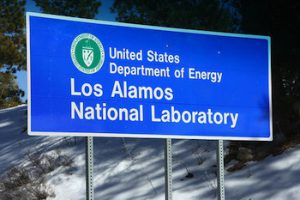
The U.S. Department of Energy in 2016 drafted a list of 17 projects at Los Alamos National Laboratory and in the surrounding town to clean up soil and groundwater that remained contaminated decades after the Manhattan Project and Cold War nuclear weapons work.
At the time, more than $2 billion had been spent in a decade on environmental cleanup projects. The Department of Energy estimated it would cost another $1.1 billion to $1.5 billion to finish the job — and up to 25 more years.
The work is far from complete.
Jay Coghlan, director of Nuclear Watch New Mexico, said cleanup costs have been “woefully underestimated,” and that an updated cost analysis is overdue.
New Mexico Is Divided Over The ‘Perfect Site’ To Store Nation’s Nuclear Waste
“Why should we be the ones to take this negative project on and put up with the consequences?” says Rose Gardner, a florist who lives 35 miles from the proposed site. “We know it’s supposed to be consent-based. They’re not getting consent. The actual people aren’t for it. And without community support, it won’t go.”
BY NATHAN ROTT | npr.org (originally published April 11, 2019)
Thirty-five miles out of Carlsbad, in the pancake-flat desert of southeast New Mexico, there’s a patch of scrub-covered dirt that may offer a fix — albeit temporarily — to one of the nation’s most vexing and expensive environmental problems: What to do with our nuclear waste?
Despite more than 50 years of searching and billions of dollars spent, the federal government still hasn’t been able to identify a permanent repository for nuclear material. No state seems to want it.
So instead, dozens of states are stuck with it. More than 80,000 metric tons of spent nuclear fuel, a still-radioactive byproduct of nuclear power generation, is spread across the country at power plants and sites in 35 states.
The issue has dogged politicians for decades. Energy Secretary Rick Perry recently described the situation as a “logjam.” But some hope that this remote, rural corner of New Mexico may present a breakthrough.
Public Hearing on Safety Management of Waste Storage and Processing in the Defense Nuclear Facilities Complex
The Defense Nuclear Facilities Safety Board (DNFSB) held a public hearing on June 20th at its Washington, DC Headquarters. The DNFSB’s goals for the hearing were (1) to discuss Department of Energy (DOE) actions to strengthen the safety posture of solid waste operations and (2) gather information on safety controls to address the vulnerabilities associated with handling and processing solid nuclear wastes.
The Live Stream of the Hearing can be seen here: http://stream.sparkstreetdigital.com/20190620-dnfsb.html?id=20190620-dnfsb
The Board will hold the hearing record open until the close of business on July 20, 2019.
Members of the public can submit written comments to hearing@dnfsb.gov until July 20.
Nuclear Waste Storage Concerns Raised By Panel Members During Santa Fe Forum
BY MAIRE O’NEILL
maire@losalamosreporter.com
Multiple concerns were raised by panel members Wednesday June 21, 2019 during a forum on nuclear waste in the state of New Mexico hosted by the Santa Fe Democratic Party Platform and Resolutions Committee at the Center for Progress and Justice in Santa Fe.
Land Commissioner Garcia Richard said her office has direct oversight of mineral leasing at the proposed Holtec site. She made public a letter she sent to the Nuclear Regulatory Commission expressing her concerns about representations made by Holtec to the NRC and New Mexicans about its control of the proposed site as well as agreements it claims to have secured from the state Land Office. She said while the Eddy-Leah County Energy Alliance LLC privately owns the surface of the proposed site, the State Land Office owns the mineral estate and that has not been disclosed by Holtec.
Hypersonic Missiles Are Unstoppable. And They’re Starting a New Global Arms Race.
How hypersonic missiles — which travel at more than 15 times the speed of sound — are touching off a new global arms race that threatens to change the nature of warfare.
[T]he new document “is very much conceived as a war-fighting doctrine – not simply a deterrence doctrine, and that’s unsettling”. – Steve Aftergood of the Federation of American Scientists, who downloaded and publicized the new policy document before the Pentagon pulled it from the internet.
BY R. JEFFREY SMITH | publicintegrity.org (This story was published in partnership with The New York Times Magazine.)
On March 6, 2018, the grand ballroom at the Sphinx Club in Washington was packed with aerospace-industry executives waiting to hear from Michael D. Griffin. Weeks earlier, Secretary of Defense James Mattis named the 69-year-old Maryland native as the Pentagon’s under secretary for research and engineering, a job that comes with an annual budget of more than $17 billion. So the dark-suited attendees at the McAleese/Credit Suisse Defense Programs Conference were eager to learn what type of work he would favor.
Nuclear weapons: experts alarmed by new Pentagon ‘war-fighting’ doctrine
US joint chiefs of staff posted then removed paper that suggests nuclear weapons could ‘create conditions for decisive results’
[T]he new document “is very much conceived as a war-fighting doctrine – not simply a deterrence doctrine, and that’s unsettling”. – Steve Aftergood of the Federation of American Scientists, who downloaded and publicized the new policy document before the Pentagon pulled it from the internet.
theguardian.com | The Pentagon believes using nuclear weapons could “create conditions for decisive results and the restoration of strategic stability”, according to a new nuclear doctrine adopted by the US joint chiefs of staff last week.
The document, entitled Nuclear Operations, was published on 11 June, and was the first such doctrine paper for 14 years. Arms control experts say it marks a shift in US military thinking towards the idea of fighting and winning a nuclear war – which they believe is a highly dangerous mindset.
“Using nuclear weapons could create conditions for decisive results and the restoration of strategic stability,” the joint chiefs’ document says. “Specifically, the use of a nuclear weapon will fundamentally change the scope of a battle and create conditions that affect how commanders will prevail in conflict.”
Deb Haaland & New Mexico Land Commissioner Letters of Opposition to Holtec
| New Mexico Land Commissioner’s Letter of Opposition to Holtec | New Mexico Rep. Deb Haaland’s Letter of Opposition to Holtec |
Government watchdog finds 3 issues disrupting US nuclear modernization efforts
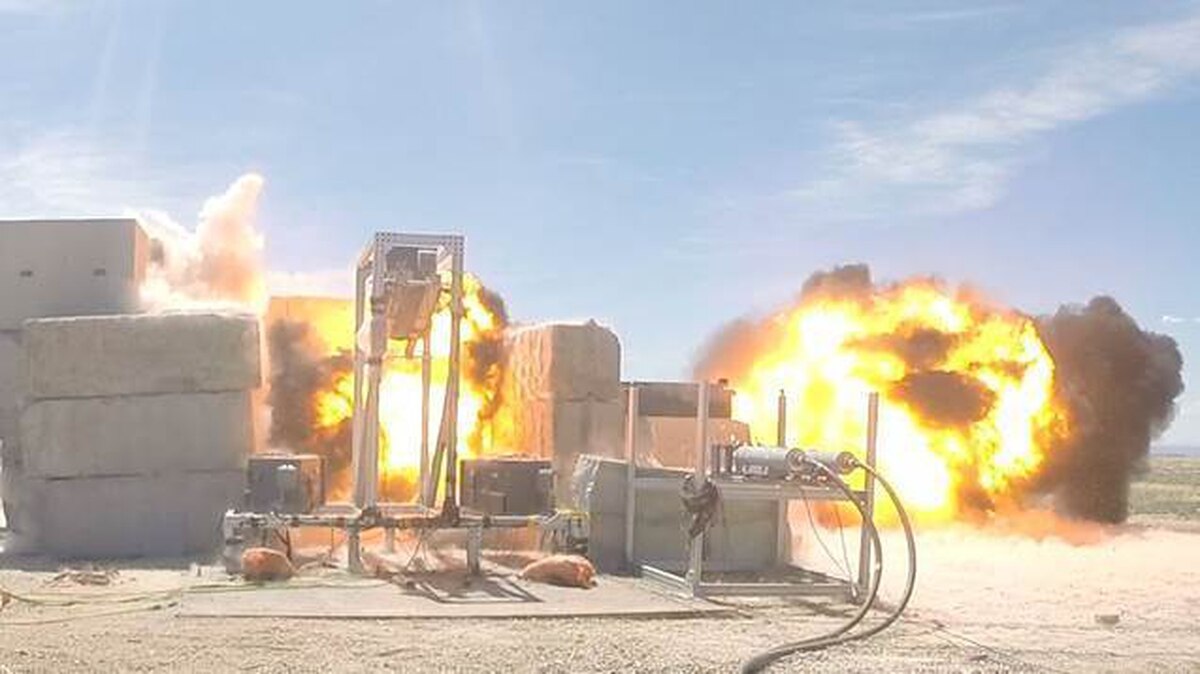
BY KELSEY REICHMANN | defensenews.com June 20, 2019
WASHINGTON — The U.S. agency responsible for making explosive materials used in nuclear weapons is facing challenges that could impact the country’s planned modernization of its nuclear arsenal, according to a report by the Government Accountability Office.
The National Nuclear Security Administration, a semiautonomous agency within the Energy Department, is facing three main challenges, according to the report: a dwindling supply of explosive materials, aging and deteriorating infrastructure, and difficulty in recruiting and training qualified staff.
This report comes amid congressional debate over the cost of modernizing the U.S. nuclear arsenal, an effort driven by President Donald Trump.
NNSA’s supply of materials, which are “highly specialized” with specific chemical and physical characteristics, are in low supply, the report says. Furthermore, the NNSA is lacking the knowledge base to produce the materials, as the recipes to make them were not well-documented, or the processes themselves infrequently practiced, the report notes.
Center for International Policy Calls for Realistic Defense Spending — $1.2 Trillion in Savings Over 10 Years — Eliminate Space Force, New ICBM, New Nuclear Warheads
Center for International Policy
Sustainable Defense: More Security, Less Spending – REPORT
Washington, D.C.—Today, during a briefing on Capitol Hill, the Sustainable Defense Task Force, which was established by the Washington-based Center for International Policy and includes ex-military officers, former Pentagon officials, and former White House and Congressional budget analysts, released a new report on how the Pentagon can save taxpayer dollars while at the same time improving security for our nation. The report, A Sustainable Defense: More Security, Less Spending, details how the U.S. can cut over $1.2 trillion in projected Pentagon spending over the next decade while at the same time improving national security. (A link to the full report is above, and a summary can be found here and a two-page fact sheet is here).
“There needs to be a fresh approach to defense strategy that makes America more secure while consuming fewer resources,” stated William Hartung, co-editor of the report. He continued, “A new strategy must be more restrained than the military-led approach adopted in this century, replacing a policy of perpetual war with one that uses military force only as a last resort when vital security interests are at stake.”
The Sustainable Defense Task Force produced the report to counter the January 2018 National Defense Strategy and the 2019 National Defense Strategy Commission. “The National Defense Strategy Commission report is an exercise in threat inflation that exaggerates the military threats posed by Russia and China while ignoring urgent, non-military challenges to our security,” said report co-editor Ben Freeman of the Center for International Policy.
Critics blast plutonium pit production pitch at Aiken forum
A coalition of nuclear watchers and environmental groups on Friday night hosted a public forum in Aiken, during which speakers unloaded on the proposed plutonium pit production expansion at both the Savannah River Site and Los Alamos National Laboratory in New Mexico.
JUNE 16, 2019 | BY COLIN DEMAREST | aikenstandard.com
The get-together, held at the Aiken Municipal Building, was largely led by Savannah River Site Watch Director Tom Clements. He was backed by Marylia Kelley, the executive director of Tri-Valley CAREs, and Jay Coghlan, who leads Nuclear Watch New Mexico.
Together, the three called into question the actual need for more pits, and the U.S. Department of Energy’s ability to successfully produce them, and discussed at length the environmental and health repercussions that could come with such a significant weapons-oriented mission.
The public “can be effective against bad Department of Energy ideas, like the pit production one,” Clements said early in his remarks.
At least 80 pits per year are needed by 2030, according to the 2018 Nuclear Posture Review, a leading nuclear policy document. Plutonium pits are nuclear weapon cores.
“They keep coming up with this number, 80, and I don’t know where they get this from,” Clements said. “They haven’t justified it.”
Nuclear News Archives – 2021
Nothing Found
It seems we can’t find what you’re looking for. Perhaps searching can help.

